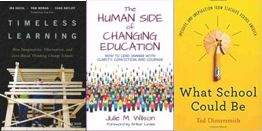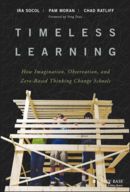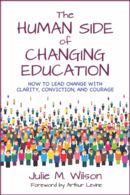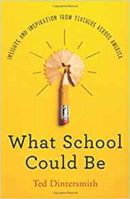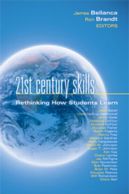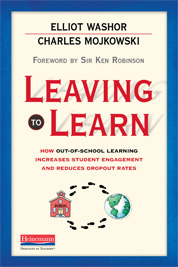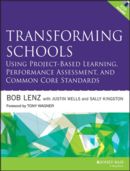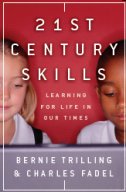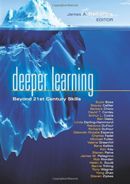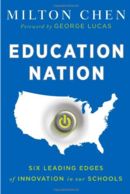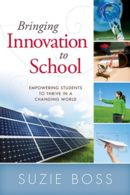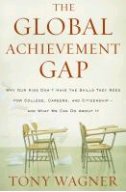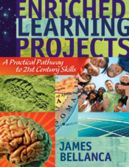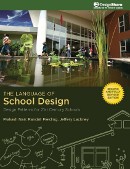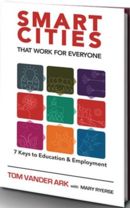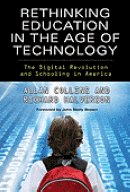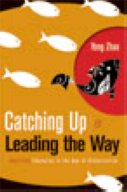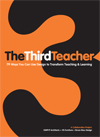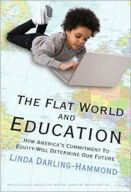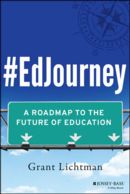Here are the books I am currently reading and that I recommend to teachers, administrators, and education innovators on 21st Century Learning.
-- Bob, October 2009.
Updated: September, 2018
![]() September, 2018: 3
Outstanding new books on 21st Century Learning
September, 2018: 3
Outstanding new books on 21st Century Learning
![]() November, 2017: Becoming
Self-Directed Learners: Student & Faculty Memoirs of an Experimenting
High School 40 Years Later, by James A. Bellanca (Editor), Arline Paul
(Editor), Mark Paul (Editor), January 9, 2014
November, 2017: Becoming
Self-Directed Learners: Student & Faculty Memoirs of an Experimenting
High School 40 Years Later, by James A. Bellanca (Editor), Arline Paul
(Editor), Mark Paul (Editor), January 9, 2014
![]() April, 2015: Suzie Boss, Bringing
Innovation to School: Empowering Students to Thrive in a Changing World.
April, 2015: Suzie Boss, Bringing
Innovation to School: Empowering Students to Thrive in a Changing World.
![]() January, 2015:Bob Lenz, Justin
Wells, and Sally Kingston, Transforming Schools Using Project-Based
Learning, Performance Assessment, and Common Core Standards.
January, 2015:Bob Lenz, Justin
Wells, and Sally Kingston, Transforming Schools Using Project-Based
Learning, Performance Assessment, and Common Core Standards.
![]() January, 2015: James A. Bellanca
et al, Deeper Learning: Beyond 21st Century Skills
January, 2015: James A. Bellanca
et al, Deeper Learning: Beyond 21st Century Skills
|
Timeless Learning: How Imagination, Observation, and Zero-Based Thinking Change Schools, by Ira Socol, Pam Moran, and Chad Ratliff. Jossey-Bass. August 2018. In Timeless Learning, an award-winning team of leaders from Albemarle County Public Schools, VA, Chief Technology Officer Ira Socol, Superintendent Pam Moran, and Lab Schools Principal Chad Ratliff demonstrate how you can implement innovative practices that have shown remarkable success. The authors use progressive design principles to inform pathways to disrupt traditions of education today and show you how to make innovations real that will have a timeless and meaningful impact on students, keeping alive the natural curiosity and passion for learning with which children enter school. |
|
|
The Human Side of Changing Education: How to Lead Change with Clarity, Courage, and Conviction, by Julie M. Wilson. Foreword by Arthur Levine. Corwin, 2018. The purpose of this book is to equip education change leaders with a practical framework and human-centered tools and resources to lead meaningful, sustainable change. In the last two to three years, the conversation has shifted from "We need to change from the factory model and here's why" to, "OK, we know that level of change is needed. But how do we change?" Order at Amazon. |
|
|
What School
Could Be: Insights and Inspiration from Teachers across America,
by Ted Dintersmith. Princeton University Press, 2018. What School Could Be offers an inspiring vision of what our teachers and students can accomplish if trusted with the challenge of developing the skills and ways of thinking needed to thrive in a world of dizzying technological change. Innovation expert Ted Dintersmith took an unprecedented trip across America, visiting all fifty states in a single school year. All across the country, he met teachers in ordinary settings doing extraordinary things, creating innovative classrooms where children learn deeply and joyously as they gain purpose, agency, essential skillsets and mindsets, and real knowledge. Order at Barnes & Noble and Amazon. |
|
|
21st Century Skills: Rethinking How Students Learn By John Barell, Linda Darling-Hammond, Chris Dede, Rebecca DuFour, Richard DuFour, Douglas Fisher, Robin Fogarty, Nancy Frey, Howard Gardner, Andy Hargreaves, David W. Johnson, Roger T. Johnson, Cheryl Lemke, Jay McTighe, Alan November, Bob Pearlman, Brian M. Pete, Douglas Reeves, Will Richardson, Elliott Seif Go to New Learning Environments to download Chapter 6: Designing New Learning Environments to Support 21st Century Skills by Bob Pearlman. |
|
|
Elliot Washor and Charles Mojokowski, Leaving to Learn: How Out-of-School Learning Increases Student Engagement and Reduces Dropout Rates, Heiniman, 2013. A website with significant 21st Century learning resources accompanies the book at http://www.leavingtolearn.org/. The book can be purchased here. |
|
|
In this book, the authors from Envison Learning explain how project-based
learning can blend with Common Core-aligned performance assessment
for deeper learning. You'll discover how many schools have successfully
made the transition from traditional, teacher-centered learning to
project-based, deeper learning and find many practical ideas for implementation.
The Companion DVD and website include videos showing how to implement
deeper learning strategies in the classroom The book can be purchased at Amazon. |
|
|
Bernie Trilling and Charles Fadel , 21st Century Skills: Learning for Life in our Times, Wiley, 2009. A website with significant 21st Century learning resources accompanies the book. The book can be purchased at Amazon . |
|
|
Education authorities from around the globe explore deeper learning,
a process that promotes higher-order thinking, reasoning, and problem
solving to better educate students and prepare them for college and
careers. Relying on research as well as their own experience, the
authors show how to use intensive curriculum, instruction, assessment,
and leadership practices to meet the needs of 21st century learners Printed
Reproducibles & Resources The book can be purchased at Amazon. |
|
|
As a result of constant innovation, learning is no longer limited
by traditional confines and we're moving beyond students tied to their
chairs, desks, and textbooks-and teachers locked away in classrooms.
In Education Nation author Milton Chen draws from extensive experience
in media-from his work on Sesame Street in its nascent years to his
role as executive director of the George Lucas Educational Foundation-to
support a vision for a new world of learning. Order at Amazon. |
|
|
Are you preparing a new generation of innovators? Activate your students' creativity and problem-solving potential with breakthrough learning projects. Across all grades and content areas, student-driven, collaborative projects will teach students how to generate innovative ideas and then put them into action. You'll take learning to new heights and help students master core content. Order at Solution Tree and Amazon. |
|
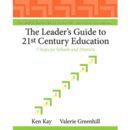 |
Ken Kay and Valerie Greenhill, The Leader's Guide to 21st Century Education: 7 Steps for Schools and Districts, Pearson, 2012. The book can be purchased at Amazon . |
|
Tony Wagner, The Global Achievement Gap: Why Even Our Best Schools Don't Teach the New Survival Skills Our Children Need--and What We Can Do About It, Basic Books, 2008. See Tony's School Change Consulting website. Order at Amazon. |
|
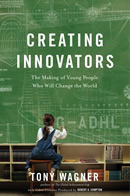 |
Order at Amazon or Barnes & Noble. |
|
The Atlantic interviews David
Thornburg on his new book on 21C Learning Environments (November 2013). |
|
|
James Bellanca, Enriched Learning Projects: A Practical Pathway to 21st Century Skills, Solution Tree Press, 2010.
See Bob Pearlman's foreword to Enriched Learning Projects. Order the book here. Solution tree has also provided a superb reproducible resources page. |
|
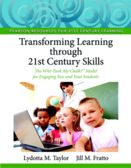 |
See Foreword by Bob Pearlman: Letter to a 21st Century Teacher. Order at Amazon. |
| The Language of School Design: Design Patterns for 21st Century Schools, by Prakash Nair, Randall Fielding and Dr. Jeffery Lackney | |
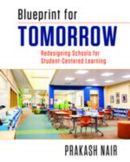 |
Order at Harvard Education Press or on Amazon. |
|
Every person, organization and region needs to get smart—to skill up, learn more and build new capacities faster and cheaper than ever. In the long run, education is the economic development agenda. Innovative new tools and schools are making it possible for individuals, organizations, and cities to boost learning outcomes. Most learning innovations occur in ecosystems—and these unique environments begin with leadership and an innovation. Order at Amazon. |
|
|
Allan Collins and Richard Halverson, Rethinking Education in the Age of Technology: The Digital Revolution and Schooling, Teachers College Press, 2009. Order at Amazon
or Teachers College
Press. |
|
|
Yong Zhao, Catching Up or Leading the Way: American Education in the Age of Globalization, ASCD, 2009. See Yong Zhao's Blog. |
|
| The Third Teacher: 79 Ways You Can Use Design to Transform Teaching & Learning by OWP/P Cannon Design (Author), VS Furniture (Author), Bruce Mau Design (Author) | |
|
Linda Darling-Hammond, The Flat World and Education: How America's
Commitment to Equity Will Determine Our Future, Teachers College
Press, January, 2010 See Books by Linda Darling-Hammond. Order at Teachers College Press or Amazon. |
|
|
Over the course of a 3-month solo road trip across the United States,
author Grant Lichtman discovered that there is much to be positive
about in today's K-12 schools. Lichtman, one of the country's leading
experts in educational innovation, interviewed over 600 teachers,
administrators, students, parents, and trustees to find out what kind
of innovations they're doing right—and how others can leverage
their successes. Also see: The
Learning Pond Blog; Website: The
Furute of K-12 Education; Twitter: @GrantLichtman;
and TEDxDenverTeachers, March 2013: What
60 Schools Can Tell Us About Teaching 21st Century Skills Order at Amazon. |
|
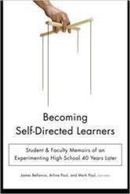 |
In 1972, an intrepid group of teachers and students at New Trier High School (Winnetka, IL) formed the Center for Self-Directed Learning. Each student would design their own program instead of following the daily grind of standardized courses with off-the-shelf textbooks, canned lectures, and, of course, the all-important final exam. Approximately 600 students took the plunge into the unknown during the Center’s 10 years. Now, more than 35 Center graduates look back on their experience, each of them writing about why they left the standard curriculum and joined the Center, what they did in the Center, and how the Center has affected their adult lives. See Amazon
Reviews and Review
by Bob Pearlman: An Inspiration for Today's Innovators Order at Amazon. |

